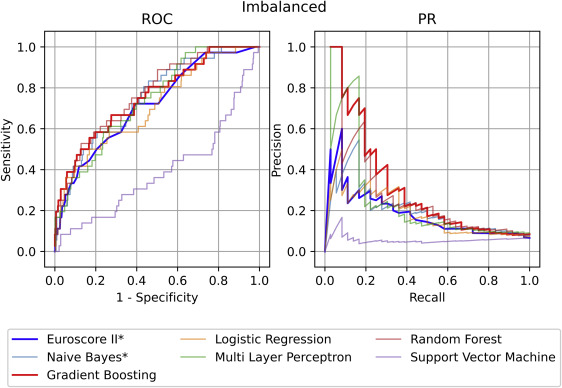Code repository for the paper Cardiac Operative Risk in Latin America: A Comparison of Machine Learning Models vs EuroSCORE-II published in The Annals of Thoracic Surgery
We present the first Machine Learning-based model for Cardiac Operative Risk in Latin America, you can try it out at cardiorisk.ml.
The model was trained on Colombian Population from the city of Bogota and has been validated using retrospective data so far.
IT IS NOT READY FOR MEDICAL USE, and is provided as an educational tool only.
The code is structured as follows:
Model Library
cardio/models: Contains implementations of different ML algorithms that follow the Model class.cardio/utils.py: Implements all the functions necessary for evaluation. It also contains Spanish to English translations of the features used.
Scripts
benchmark.py: Executes multiple train/evaluation experiments to compare evaluation metrics between all the ML algorithms, along with their confidence intervals. The outputs are saved in JSON format at:data/outputs.jsoncalibration_curves.py: Re-runs experiment trials to calculate calibration curves for selected algorithms.calibration_tables.py: Calculates the calibration error of High Risk vs. Low Risk population subgroups for selected algorithms.create_figures.py: Reproduces the figures presented in the paper. Including: ROC and PR Curves, Confusion Matrices and SHAP interpretability scores.
The Gradient Boosting model, trained with our dataset of Colombian population, outperforms the established EuroSCORE-II in both the ROC and PR AUC metrics:
We also found (using the SHAP interpretability framework) that our model's risk assignment for certain variables is consistent with medical practice. For example, healthy hematocrit ranges which should be between 41% - 50% (for men, according to the American Red Cross) are automatically identified by our moodel, as can be seen from its SHAP score:
To see how other variables interact with our model, check the Supplemental Material
@article{molina2022cardiac,
title={Cardiac Operative Risk in Latin America: A Comparison of Machine Learning Models vs EuroSCORE-II},
author={Molina, Ra{\'u}l Santiago and Molina-Rodr{\'\i}guez, Mar{\'\i}a Alejandra and Rinc{\'o}n, Francisco Mauricio and Maldonado, Javier Dario},
journal={The Annals of Thoracic Surgery},
volume={113},
number={1},
pages={92--99},
year={2022},
publisher={Elsevier}
}
